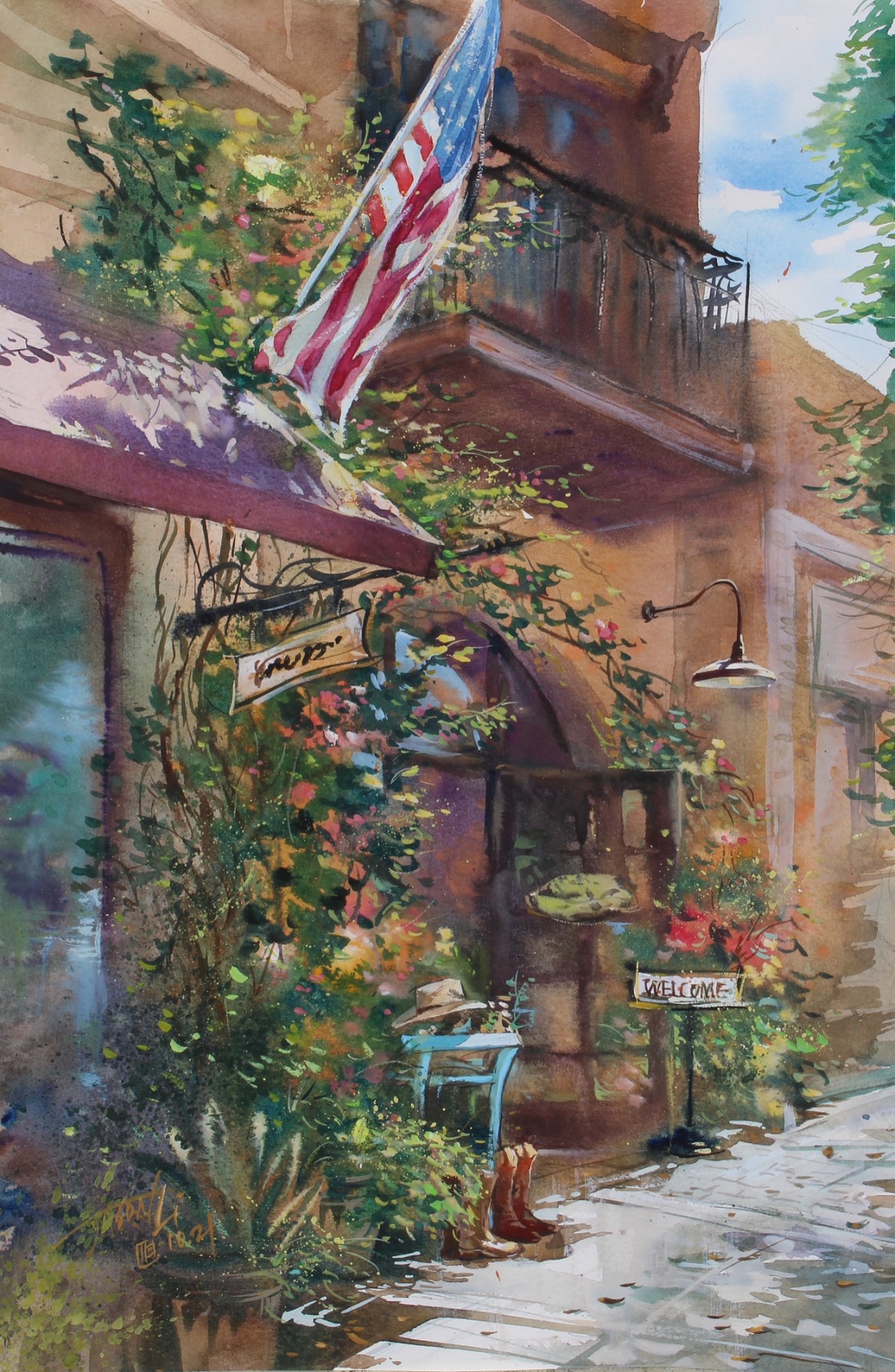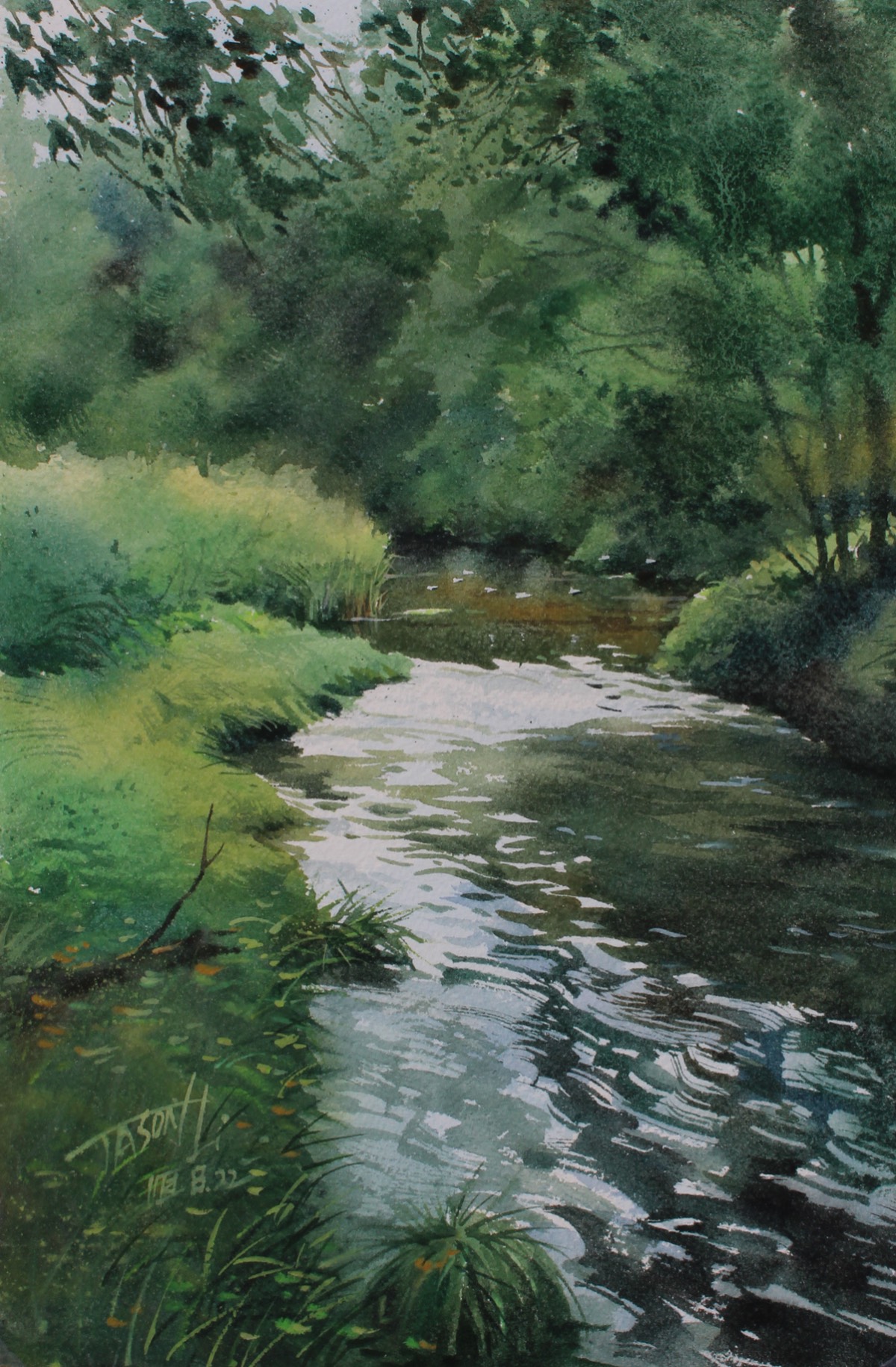
PROBLEM: Using too much (or not enough) water.
SOLUTION: “Watercolor is a unique medium,” says Jason Li. “It requires careful planning and spontaneous reaction at the same time. When it comes to using watercolors en plein air, the ability to satisfy both conditions is key to having a successful outcome.
“To that end, plein air watercolor painters generally have a love-hate relationship with water. Without it, the painting will lose its translucent look. Too much, however, and shapes lose their integrity, and the intensity of the colors disappears. But learning to control the amount of water on the paper takes time. Many watercolor students struggle with the unpredictable nature of water and can be afraid to add color to still-wet initial washes for fear of ruining the painting. An experienced artist, however, can turn any mishaps into ‘happy accidents.’

“When painting en plein air, I first formulate my thoughts about composition and color theme, then I do a very loose sketch on my watercolor paper so I won’t get too bogged down in the details. Next, I wet the part of the paper where I want to create a smooth transition of color, such as the sky or water, and add my first layer of paint. From there, I turn my attention to the dry areas of the paper. By the time I finish those, I can go back into the original wash with the same color, but with a drier brush, to paint over the first layer while it’s still moist. This allows me to avoid hard edges and achieve the effect of misty mountains or faraway objects. It’s an especially effective technique when I paint a sunset or sunrise scene. Having the sun change position while I’m waiting for my surface to dry is one of the worst feelings I get when painting en plein air.
“In general, I’m not satisfied with simply using washes of color to make free expressions on my watercolor paper. Nature is full of delicious textures and I want my paintings to be able to capture details and textures. That’s the story I want to tell. In plein air, I focus on the most striking element by using a dry brush — with paint but very little water — on dry paper to highlight those details and textures.
“It’s important not to do too much when plein air watercolor painting. Loosen up and embrace the happy accidents that only watercolor can bring.”

TIMING IS EVERYTHING
When your paper is …
Wet: Conditions are ideal for creating soft, “lost,” or uncontrolled-edge shapes.
Moist: This is the best opportunity to make soft, controlled-edge shapes and misting effects, and to blend color.
Damp: Now is the time to add broken edges and shapes, lift, and scratch out.
Dry: You can create hard-edged shapes, drybrush, scrape, and make lines.
Thomas W. Schaller shares his secrets to painting wet-on-wet, organizing three basic values, and more in his Ultimate Watercolor Masterclass.







